2023 Year in Review for the Cloquet Forestry Center & Hubachek Wilderness Research Center
From the Director’s Desk
As I sit down to write this note I cannot help but look outside and wonder, where is winter? After last year’s almost record-breaking snow amounts, this year’s winter is shaping up to be warm and wet. It is so different from the norm, it is so different from what I am used to, that it makes me a bit uncomfortable.
In a similar way, the University and Fond du Lac Band of Lake Superior Chippewa (FDL) continue to work together to finalize the details of a land transfer that will return the land that the Cloquet Forestry Center resides on back to the tribe. Personally, I am not involved in every one of those discussions, but I have been part of a group that met with FDL representatives to provide information regarding ongoing research, teaching, and operational efforts at CFC. The land transfer is an involved process; the details are not finalized, and I am told there will likely be a public comment period after both parties agree on a plan of action. If the uncertainty of exactly how and when the land transfer will occur causes anxiety, you are in good company! If you are interested in learning more, our Feature Story section covers some commonly asked questions.
In the meantime, come visit the forest. Right now, there is not enough snow to pack a ski trail but those same trails are a perfect place to take a hike and appreciate the serenity that a walk in the woods can bring.
Sincerely,
Andrew David
Director, Cloquet Forestry Center, Hubachek Wilderness Research Center
Land Return to Fond du Lac Band
Thank you for being interested and invested in the future of the Land!
Since this February 3, 2023 News Release, many people have expressed interest in the Land Back process underway at CFC. Most recently updated August 18, 2023, this Frequently Asked Questions (FAQs) document is the best place to find new information as it becomes available. The FAQs document will continue to be maintained by U of M Public Relations and CFANS Communications.
Page three of the FAQs highlights the work conducted in 2023 and what can be expected in the near future. A few pertinent questions and answers from the FAQs are included below:
What progress has been made in those discussions about continuing research?
A focused working group of Fond du Lac and U of M representatives have been diving deeper into the details of possible collaborative research and outreach opportunities as we look into the future. This technical working group has been charged with compiling information related to the U of M’s current and potential future activities at the Cloquet Forestry Center, details which will help all involved to develop a memorandum of understanding or other agreement related to potential U of M land uses as ownership and management of the land is transferred to the Fond du Lac Band. This information will also provide helpful background information for a public comment period and for additional discussions with state officials about returning the land.
U of M representatives working in this group include faculty, researchers and leadership from the U of M Department of Forest Resources, the Cloquet Forestry Center and the College of Food, Agricultural and Natural Resource Sciences. Karen Diver, the U of M’s Senior Advisor to the President on Native American Affairs, has and will continue to provide the group with guidance and expert counsel.
*”Research” is shorthand for the full program of projects that rely on the CFC landbase including projects categorized as Research, Teaching/Education/Outreach, Demonstration/Case Study/Monitoring, Management, or Other. See Gill 2022 for full information on experimental forest projects.
What is the timing for the technical working group?
The technical working group met several times during summer 2023 [and shared] the results of its work with Fond du Lac and U of M leadership during the fall.
When will there be an opportunity for public comment?
We remain committed to an open and transparent process as we examine the future of this land. We will hold an official comment period once there is a plan in place for transferring ownership of the land, which we expect this coming winter [2024].
Any questions beyond what is in the FAQs document should be directed to the U of M University Relations team.
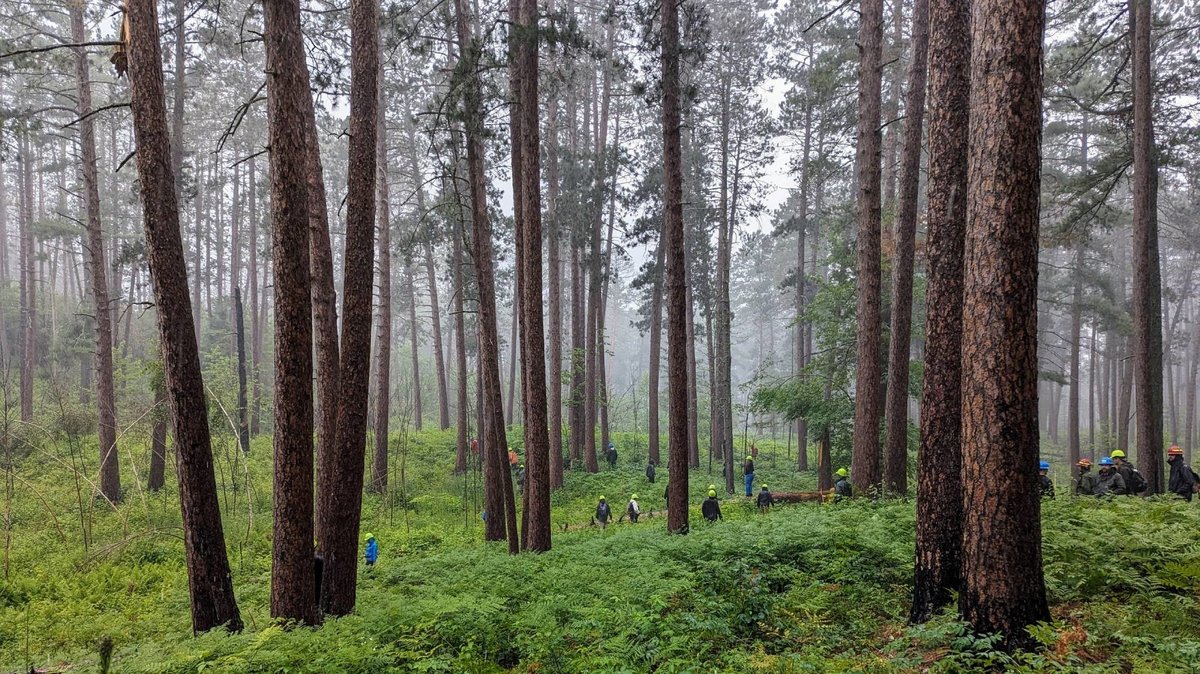
2023 Highlights by Program
CFC Facilities
The record snowfall of Winter 2022–23 did not leave the CFC unscathed. Our 4000-square-foot sawmill building, built 1970, collapsed under a heavy snow load in the middle of March. The process for getting the wreckage cleaned up was long, but once on site, the contracted cleanup crew made short work of it all. After the cleanup was finished, we planted a variety of native grasses, shrubs, and flowering plants within the footprint of the collapsed structure.
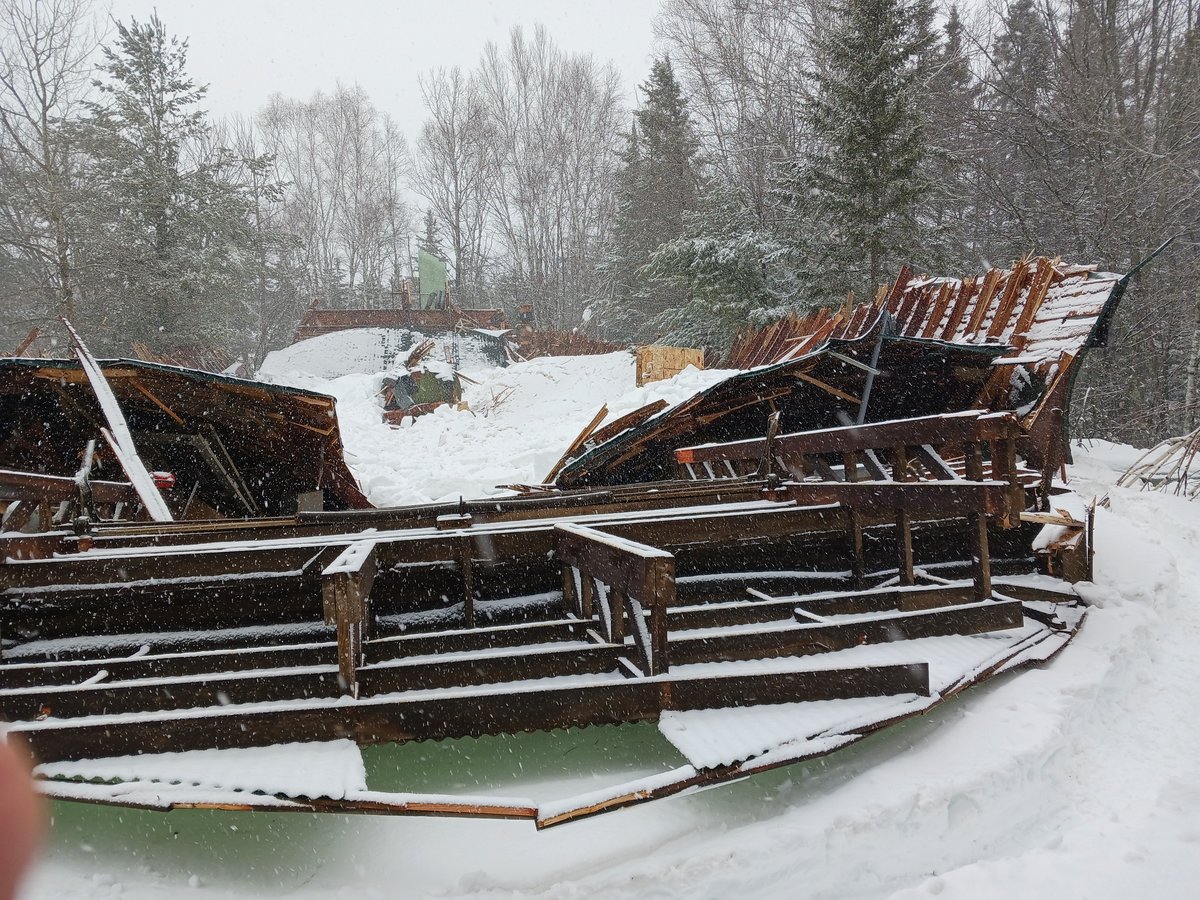
The pollinator garden at the main entrance to the Classroom Administration Building (CAB) replaced a large rock bed that was part of the landscaping installed in 2006. This rock bed did not age well as years of tree litter had built up and allowed unwanted weeds to thrive. The new garden contains a variety of daylilies, white swan coneflower, limoncello barberry bush, and variegated feather reed grass. The old rock bed did serve another purpose in rainwater mitigation though, so when designing the new garden, we incorporated a rock bed in the area where the majority of rainwater spills off the CAB roof.
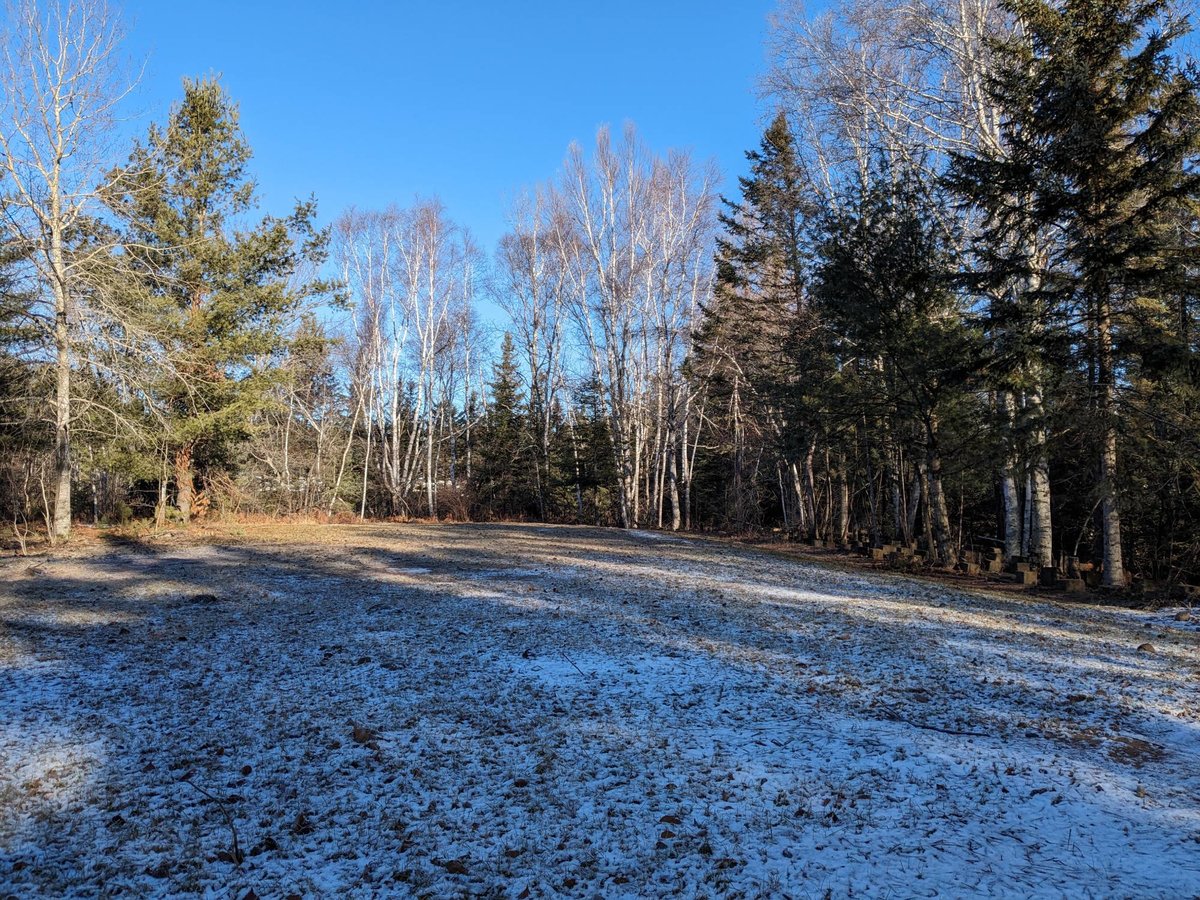
A large portion of the old rock bed was also converted to turf grass where we installed two new flag poles. An American flag as well as the flag of the Fond du Lac Band now welcome CFC visitors. The FDL flag was first raised at CFC during a ceremony held on September 11th, led by the FDL veterans honor guard. FDL Chairperson Kevin DuPuis Sr. spoke.
The buildings and grounds crew, Simon, Mark, and Chad, also tackled some exterior painting over the summer and fall. Two of our older outbuildings (white house garage and chicken coop) and the Cabin 36 lodging unit were refreshed with paint. The alumni log pavilion also received a new coat of stain.
Forest Management & Research
It has been another excellent and full year for the Experimental Forests landbase. The trees, birds, mammals (two- and four-legged), and other members of the ecological communities have spent time developing relationships with each other and with the land. In addition to the thousands of typical forest beings (humans, wolves, badgers, songbirds, birds of prey, porcupines, fishers, red pines, aspens, hazel, sweetfern, to name a few), we had a couple of rare visitors of note at both CFC and HWRC in 2023. At both sites, moose wandered by remote cameras. Moose sightings are a bit more rare at CFC but still of note at both sites. And at HWRC, a mountain lion decided to visit — see HWRC section for more. One to two rare visitors to the forest do not tell an entire story of whether we are succeeding at our forest stewardship goal of providing a diversity of quality wildlife habitat, but they are quite fun to see in the community.
At the turn of the year, we are in the process of reaching out to the leaders of all projects that were active in 2023. When we query the database for the projects from which we need updates, I’m always a bit surprised at just how many projects were active. For the 2023 check in, we are reaching out for updates on 110 different projects! These range across research, teaching/education, case study/monitoring, and stewardship project categories. Once we have heard back from the ~60 leaders of these projects, we’ll put a summary report together. My guess is that the lesson this year will be similar to the 2022 check-in report: our researchers and teachers are exploring many aspects of forest ecosystems and their stewardship.
Respecting Indigenous sovereignty in our forest stewardship and research coordination at the CFC is a practice that we are getting to know in the FMR group; in particular, the sovereignty of the Fond du Lac Band of Lake Superior Chippewa, on who’s unceded land the CFC is based. Acting on the knowledge gained from cross-cultural interpretation of tree-ring fire history records has been an opportunity to continue relationship building with the land and contemporary human communities.Collaborative fire restoration with the FDL Forestry & Fire program, and other partners, including the Bureau of Indian Affairs and The Nature Conservancy, has been an incredible avenue to better understand how fire history and prescribed fire are connected to Indigenous sovereignty and treaty rights.
Since the UMN both announced the intention to honor FDL’s request to have the land return to FDL ownership, and the UMN Office of Native American Affairs put out Guidelines for Indigenous Research, we have had the opportunity to practice respecting Indigenous sovereignty as it relates to all projects at CFC. The first major lesson we have learned is that respecting Indigenous sovereignty means no longer assuming that information sharing after the fact is acceptable. We need to ask permission in advance for the ways we would like to work with tribal land, to look for ways to build up Indigenous scientists, knowledge keepers, and practitioners, because relationships with each other and the land are needed to support mutual goals. When it comes to active research and other projects at the CFC, asking permission is now the basis of the standard procedures we are developing with FDL as one means of respecting the inherent sovereignty of FDL.
In this vein, a major goal for summer 2023 was to share the depth and breadth of active research, teaching, and management projects at the CFC with the FDL Resource Management Division. This was part of an ongoing FDL-UMN relationship building effort and an attempt to answer the seemingly simple question of “What do you all do out there?” Sharing this knowledge of how the University has been using the land is a big effort in improved neighborly communication. Moving forward, we look forward to sharing the lessons learned from this process so that we can all be better at respecting Indigenous sovereignty.
Thanks for being a part of our UMN Experimental Forests community!
Kyle Gill, on behalf of the of FMR team, UMN Forester and Research Coordinator
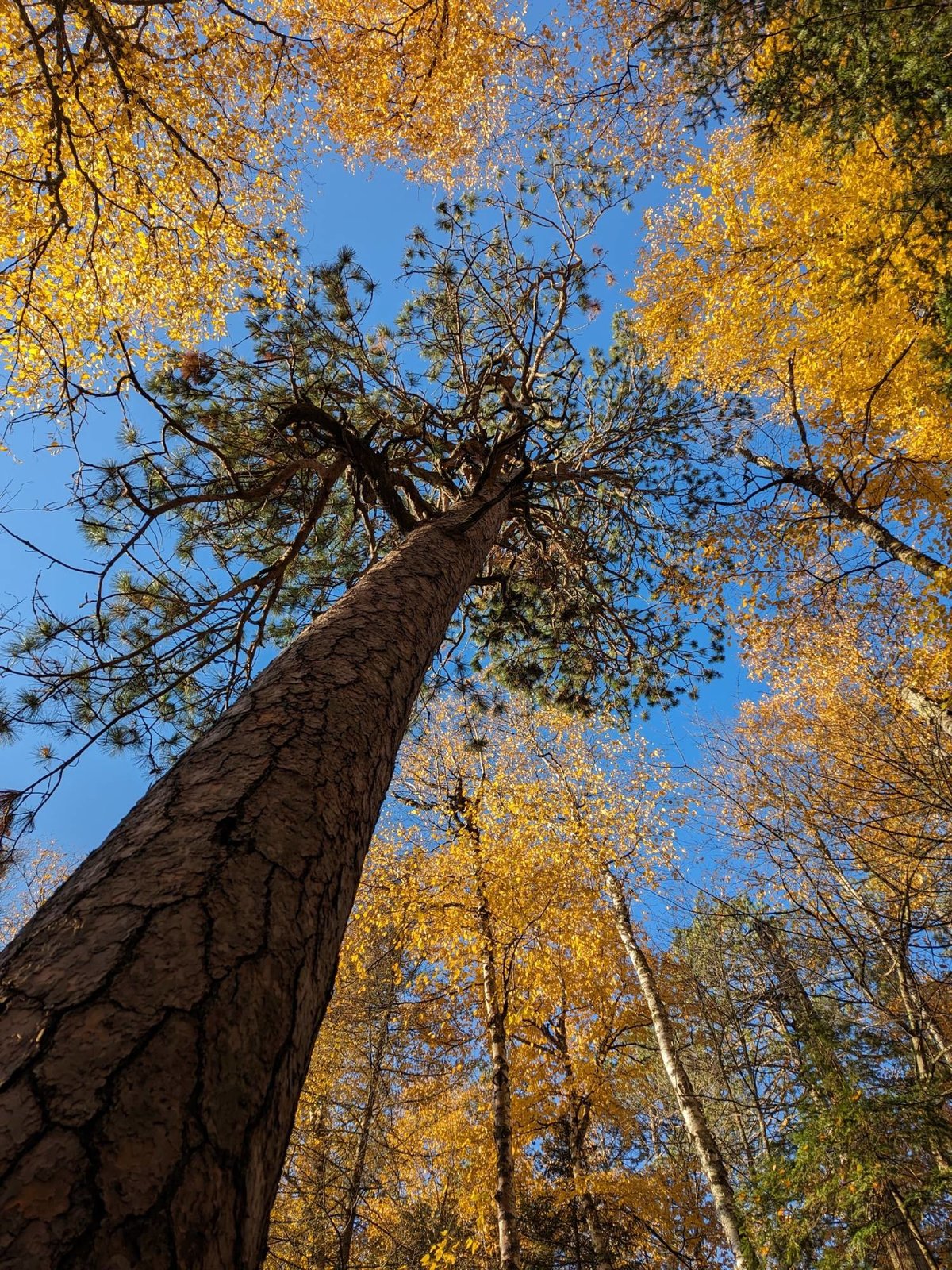
Hubachek Wilderness Research Center (HWRC)
Here at the Hubachek Wilderness Research Center, early winter has been so warm and dry that there is practically no snow on the ground at this writing. Quite a change from last winter’s early, deep, and persistent snows and insulated, unfrozen ground.
In 2023, with that deep winter snowpack, a late thaw, and frequent summer rainfall, we escaped the severe drought conditions that much of Minnesota experienced this year. We have never seen aspen leaf out as fast as they did this spring. Timing of spring rains was such that grouse chick survival was phenomenal. Normally sticking to the woods, grouse foraged in the lawn around campus buildings this fall.
This year brought significantly more students and researchers to HWRC than in the recent past. It was a busy season! We hosted:
- Eight graduate student research and outreach groups conducting work in geology and forest plant and wildlife ecology in northeast Minnesota.
- Two UMN courses: Earth Sciences’ Advanced Field Geology, and Forest Resources’ Park and Protected Area Management Field Studies.
- One workshop: Minnesota Women’s Woodland Network’s chainsaw safety
- One student club: the UMN Forestry Club
- One research symposium: the B4WarmED forest climate adaptation research project
A UMN Eastern Hemlock Project was initiated with plantings at the HWRC and other northern Minnesota sites in the spring. The project goal is to develop planting guidelines for Minnesota’s only endangered tree species.
The B4WarmED climate research project continued its work here and at CFC. The research group held their first mini symposium at Hubachek in June with UMN and University of Michigan scientists from the United States, Poland, Spain, South Africa and China. Now, the plot heaters are turned off and the project rests for the winter.
The Monitoring Avian Productivity and Survivorship project at the HWRC had an interesting banding season, with (anecdotally) fewer warbler and chickadee captures in general, and a notable drop in American redstart presence. Thrushes and ovenbirds seemed to be around in their usual abundance.
To provide a foundation for future growth and to support current classes and research on site, several major infrastructure improvement projects are underway at the HWRC. Improvements include a new well and water system, upgraded electrical system and high speed internet. The HWRC is getting ever closer to the first phase of water system improvements since the new well was drilled in 2022. The project is, or will soon be, open for bids. A site-wide electrical system update is also in the foreseeable future. University of Minnesota IT professionals installed the first phase of a significant internet upgrade in 2022 and plan to return next spring for phase two. The Lodge kitchen will get a new floor this winter.
We had some excitement this fall while the Voyageur Wolf Project was visiting the HWRC. They discovered a doe dying near the waterfront, apparently healthy except for some infected wounds on her neck which could have been from the bite of a large carnivore. This was not the sort of wound we would expect from wolves or bear. We were a bit baffled until a mountain lion showed up in photos from a nearby camera trap a few weeks later. Beckie will be carrying an air horn and bear spray into the woods as she conducts forest surveys into the winter. She hopes the big cat has behaved as expected for this region and moved along.
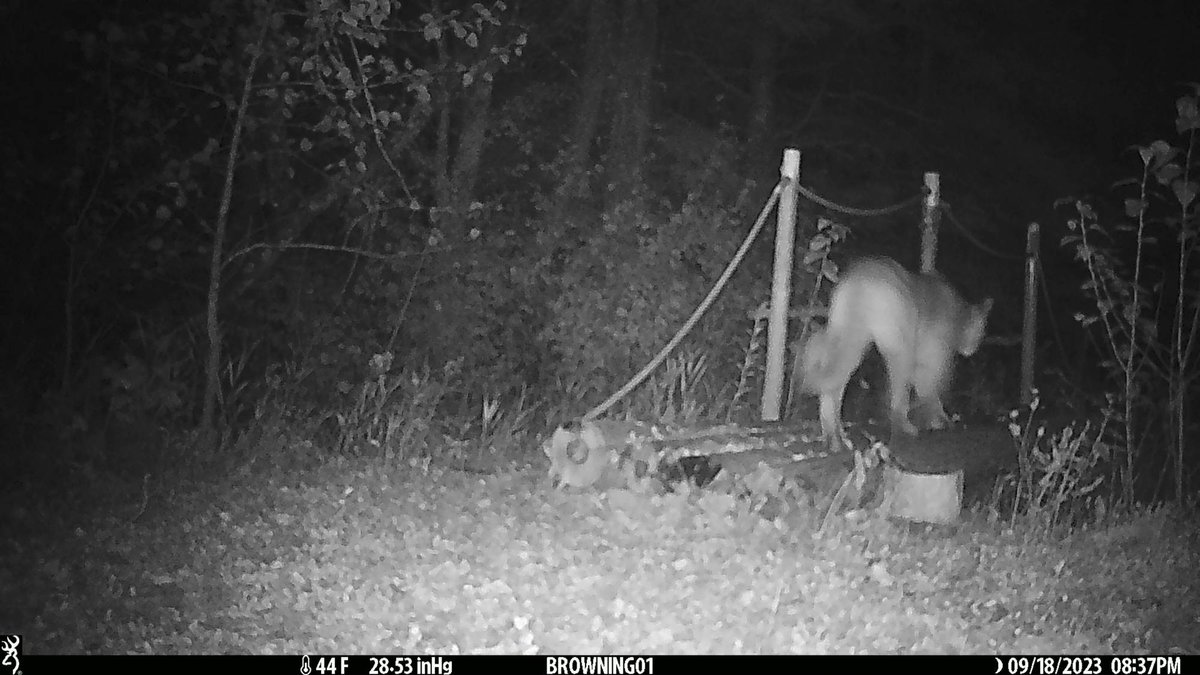
Sustainable Forests Education Cooperative (SFEC)
Through the Sustainable Forests Education Cooperative, we help Minnesota’s forestry, wildlife, and other natural resource managers stay up to date on the scientific research and innovative practices that can inform their work. This past year our January Research and Practice Review filled the CFC auditorium for presentations ranging from how timber harvesting can benefit threatened songbird species to the role of fire in maintaining our forest ecosystems to efforts to protect and expand populations of butternut and eastern hemlock, two threatened tree species in our state.
Some of our programming goes beyond the boundaries of CFC. This year we visited Ely, the home of our Hubachek Wilderness Research Center, for a two-day gathering to explore lessons learned from the 2011 Pagami Creek Fire, which burned over 90,000 acres in the Boundary Waters Wilderness.
Working with the UMN Extension Forestry team, we also developed new content and programming around climate-ready woodlands and tree seed collection to supply forest regeneration efforts. These new programs will enlist community members from across the region to ensure availability of climate-adapted tree seedlings that keep northern Minnesota’s forests healthy and productive.
Finally, we are happy to bring back the first field-based training on Minnesota’s Site-Level Forest Management Guidelines to the CFC. We welcomed 50 loggers and land managers in October to discuss practical ways to protect forest soils, water, and wildlife during the timber harvests that our forests and communities depend on.
It has been a good year. We’d love to have you join us for similar programs in 2024! In particular, everyone is welcome at our webinars, which are typically on the third Tuesday of each month. Look for upcoming programs at http://z.umn.edu/SFEC.

